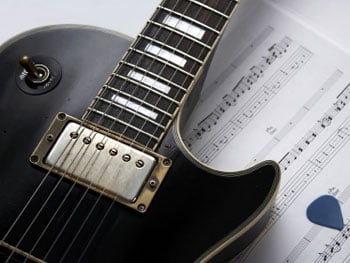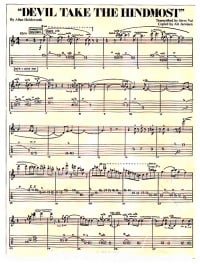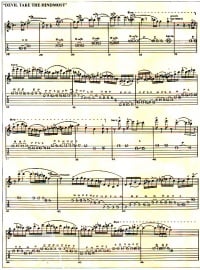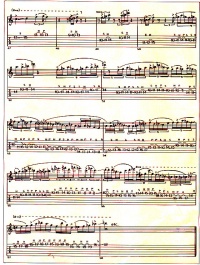Allan Holdsworth
(→Sample transcriptions) |
(→Sample transcriptions) |
||
| Line 87: | Line 87: | ||
<br | <br | ||
[[Image:hindmost1.jpg|thumb|200px|left|Devil take the hindmost 1]][[Image:hindmost2.jpg|thumb|200px|left|Devil take the hindmost 2]][[Image:hindmost3.jpg|thumb|200px|left|Devil take the hindmost 3]] | [[Image:hindmost1.jpg|thumb|200px|left|Devil take the hindmost 1]][[Image:hindmost2.jpg|thumb|200px|left|Devil take the hindmost 2]][[Image:hindmost3.jpg|thumb|200px|left|Devil take the hindmost 3]] | ||
| + | <br><br><br><br><br><br><br><br><br><br><br><br><br><br><br><br> | ||
<br><br><br><br><br><br><br><br><br><br><br><br><br><br><br><br> | <br><br><br><br><br><br><br><br><br><br><br><br><br><br><br><br> | ||
<br><br><br><br><br><br><br><br><br><br><br><br><br><br><br><br> | <br><br><br><br><br><br><br><br><br><br><br><br><br><br><br><br> | ||
Revision as of 10:11, 20 October 2009
Contents |
Introduction
Alan Holdsworth is known to be a guitarists guitar player, and many of today's great guitar players mentions him as a source of inspiration. His innovative legato technique in combination with wide stretches and "impossible" chords, makes his style and approach to music unique. He was also one of the first players to adopt the guitar synthesizer and played a major role in the 70' jazzrock movement.
Early career & influences
Alan Holdsworth, born August 6, 1946 in Bradford, West Yorkshire, England, is son of a skilled amateur musician, that in early ages was taught music theory and began to play the saxophone, but switched to guitar at age 17, probably due to the lack of work for saxophone-players at that time. He states Django Rheinhardt and Wes Montgomery as his first role models, but the biggest impact on him was actually horn players like John Coltrane and Cannonball Adderley. He stated in an interview that when John Coltrane died, he locked himself into the bathroom and cried for hours. Influences also included Charlie Christian, Joe Pass and Eric Clapton. Rumours had always told that Alan was a violin-player, cause of his violin-like sound on the guitar, but that's not actually true, even that Alan bought a violin from a pawn-shop and practiced it for some year.
In the beginning of his career he paid his dues by playing on local dance establishments and clubs, playing whatever what was asked for. His first recording was made in 1969 with Igginbottom ("Wrench"). On occasion he met Ray Warleigh, one of the best tenor-sax players around at that time, and he brought him to London to perform at the legendary Ronnie Scotts with his band in the early 70's.
In 1971 he was a member of Sunship, a band that played mostly improvised music, and contained future-member of King Crimson, percussionist Jamie Muir. He was then "discovered" by Jon Hiseman, who had his "progressive"-rock band "Tempest" by that time, and was eventually touring internationally. He is featured on the cult-recording by Tempest from 1973 with the same name, as well as a recording made by BBC by the same time. His fame grew among musicians in the U.K, when beeing a member of avant-garde instrumental music ensemble, Soft Machine. In 1974 they released the album "Bundles", which led to an international reputation as a skilled guitar player.
Shredding the Jazzrock scene in the mid/late 70's
Drummer Tony Williams (ex. Miles Davis) heard Alan around 1975 and asked him to join his band "The New Lifetime", which was one of the leaders in the jazzrock-movement back then. Alan states that from the very beginning "Lifetime was just me and Tony". They just kept playing with musicians in Tony's apartment, until they found one that Tony really dug. Even Jaco Pastorius was said to be around.
Alan was then participating in many different constellations in the genre, adding colour with his personal sound/approach. He was playing with Pierre Moerlen's band "Gong", as well as participated on Bill Brufords (ex. Yes, King Crimson) first two solo albums and violinist Jean-Luc Ponty's solo albums. In 1976 CTI records released a solo album with Alan, known as "Velvet Darkness", against Alan's will. The album was made from some old tapes when he was rehearsing in a studio, and he still doesn't want to hear about it.
In 1977 he joined Bill Bruford, John Wetton and Eddie Jobson (ex-Roxy Music/Frank Zappa) to form one of the most succesful progressive-rock bands to be known as just "UK". Due to different thoughts about the music, Alan was asked to leave the band by John Wetton (Alan states that no personal matter was involved, they had just different musical directions), but appeared on Bill Brufords album "One Of A Kind" from 1979. He also begun a short-lived collaboration with pianist Gordon Beck, even though they played together later in his career resulting in two more jazz-oriented albums. (Sunbird 1979 and The Things You See 1980)
Going solo
Tired of beeing a sideman/session player Alan formed his own band I.O.U in the beginning of the 80's. The name I.O.U is short for "I Owe You", which was a joke among the members - since they all liked beer, and got lousy wages, they might as well ending up beeing paying the club owner instead of getting paid. The first setup of I.O.U included drummer Gary Husband and bassist Paul Carmichael. His first release as a leader was in 1982 with an album just entitled "I.O.U".
In an interview in Guitar Player in 1983 Eddie Van Halen stated: "that guy is bad! He’s fantastic, I love him" and "he's the best, in my book." Van Halen persuaded Warner Bros. Records executive Mo Ostin to sign Alan, and he relocated to L.A by the same time his first album (EP) on Warner "Road Games" was recorded. Since Gary Husband left Alan's band to join Level 42, Chad Wackerman (ex. Zappa) and Jeff Berlin (from the Bruford band) joined Alan for the recordings. Along was also Jack Bruce, a long-time friend and collaborator of Alan's, who's doing some vocals on Road Games. Noteworthy is that Ted Templeman (Van Halens producer) was producing the album as well as the forthcoming "Metal Fatigue". The album was grammy nominated the next year. (1984)
Since Alan had controversies with Warner regarding his artistic freedom, he signed a new contract with Enigma Records. In 1985 Alan recorded "Metal Fatigue" with bassist/top session player Jimmy Johnson (Flim & the BB's) and Chad Wackerman, both of them still members of Alan's band. Also appearing on the album was bassist Gary Willis and original IOU drummer Gary Husband as well as others. One of the albums track's "Devil's take the Hindmost" was featured as a little plastic sleeve in Guitar Player, together with a transcription of the solo. (that the editor NEVER heard someelse manage...)
The following album "Atavachron" is best known for Alan's introduction of the guitar synthesizer "Synthaxe", which is present on and off on almost all of his solo recordings. (he was also doing some branding for them in ads etc.) The personnel are very much the same as on Metal Fatigue, but also featured Alan Pasqua (keyboard) and Tony Williams on one track.
The following album "Sand" in 1988 saw Alan's further explorations of the SynthAxe and the same year was also the third duo-album with pianist Gordon Beck released. The following year was Alan's studio "The Brewery" built (in L.A), and "Secrets" featuring drummer Vinnie Colaiutta was recorded on location. The name for the studio was taken from one of Alan's major interests in life except the guitar - beer! Alan is known to be a real connossieur and knows a lot about the art of brewing.
During the eighties Alan also recorded as a guest soloist/collaborator with artists such as: John Stevens, Jean-Luc Ponty, Jon St. James, Krokus, Stuart Hamm, Stanley Clarke and Jack Bruce amongst others.
Further explorations
Alan's friend/drummer Gary Husband was working with Level 42 in the beginning of the 90's, when their guitarist Alan Murphy died from pneumonia. Murphy, who actually was a big fan of Alan, was replaced by Alan for the album "Guaranteed" and Alan was joining Level 42 on a series at Hammersmith Odeon in London. Due to a misunderstanding between Alan and the band's leader bassist Mark King, Alan was never hired permanently in the band, even that he might be wanted to.
Alan followed up his solo career in 1992 with the album "Wardenclyffe Tower" that introduced a collaboration Alan had with luthier Bill DeLap - the Baritone guitar! Keyboard-player Steve Hunt started to appear on Alan's records and in conjunction with icelandic bass player Skull Sverrisson and drummer Gary Husband, they made a release in 1994 entitled "Hard Hat Area".
In the beginning of the 90's it was popular amongst metal-bands to use the Baritone guitar for getting lower bass tones, but the first Baritone was actually made in the 50's by Danelectro. Ed. note.
Alan changed direction in 1996 with the album "None to soon", which can be seen as a tribute to his role-models, containing jazz-standards such as "Nuages", Countdown" and even "Norwegian Woods" by the Beatles. His fellow jazz-piano player Gordon Beck, monster-bass player Gary Willis and Kirk Covington made up the band, and the album was recorded at the Brewery.
He also made a visit in Sweden 1996, collaborating with the brothers Johansson (Jens and Anders), whose are son's of world-famous jazz piano-player Jan Johansson on their album "Heavy Machinery".
Continueeing the tradition from the previous solo-album, Alan continueed with an acoustic rhythm-section/jazz motifs on the album "The Sixteen Men of Tain" (1999), which refers to Glenmorangie, a distillery in Scotland.
The new Millenium
Due to the divorce in 1999, Alan had to sell off his studio and wasn't recording/beeing active as much as before in the beginning of the new Millenium. He hasn't been releasing a studio solo record since "The Sixteen Men of Tain", but have done a lot of live performances, as well as two live-albums (the first for Sony in Japan) entitled "All Night Wrong" (2002) and "Then!" (2004).
These was the first official live-recordings from Alan, since he is very self-critical and never have approaved a live recording, even though he had been bootlegged for numerous times. He is known to be suffering of "stage-fright", and is legendary about the criticism about his own playing. But at the same time he admits this to be one of the reasons for developing his style and to continueeing to explore music.
People about Alan
- Edward Van Halen ("He's the best in my book.") - Yngwie Malmsteen ("I had to take my hat off to him.") - Frank Zappa ("He's the most interesting guitarist in the universe.") - Steve Vai ("The two best electric guitarists are Jeff Beck and Allan Holdsworth.").
He has also been voted best guitar player for 5(!) times by readers of the magazine "Guitar Player".
Style
Alan's style is immidiately reconizeable and he has an unique sound as well as an unique approach to the electric guitar. He is known for huge stretches of his fingers and an outstanding legato technique and his unusual chord voicings. (often in combination with volume pedal to obtain swells) He has a complicated rhytmic approach and his timing is truly remarkable. He plays with a singing distorted sound, that have tended to be less with distorsion in the past 20 years. He states that it's actually the sustain he's after rather than the distorsion - probably to sound more like a horn player. He' been using the SyntAxe extensively as well as Baritone guitars, but are seldom heard playing acoustic guitars.
Gear
Discography
Lorem ipsum dolor sit amet, consectetur adipisicing elit, sed do eiusmod tempor incididunt ut labore et dolore magna aliqua. Ut enim ad minim veniam, quis nostrud exercitation ullamco laboris nisi ut aliquip ex ea commodo consequat. Duis aute irure dolor in reprehenderit in voluptate velit esse cillum dolore eu fugiat nulla pariatur. Excepteur sint occaecat cupidatat non proident, sunt in culpa qui officia deserunt mollit anim id est laborum.
Related GMC Lessons
None, at the time this is written.
Sample transcriptions
Devil take the hindmost ("Metal Fatigue" 1985, transcribed by Steve Vai)
See also
(this is a speical headline that is optional)









